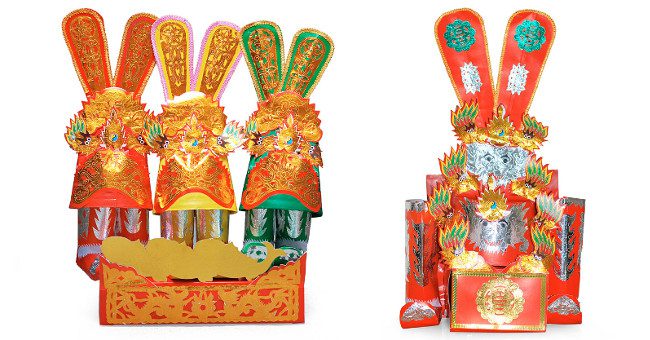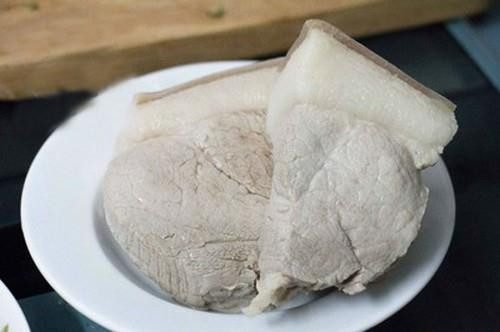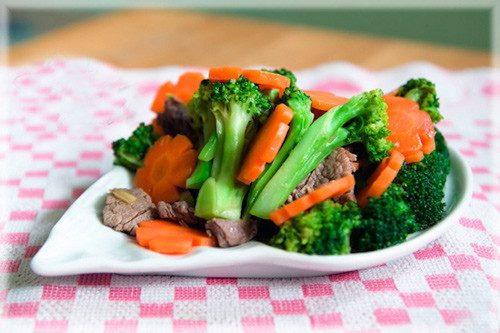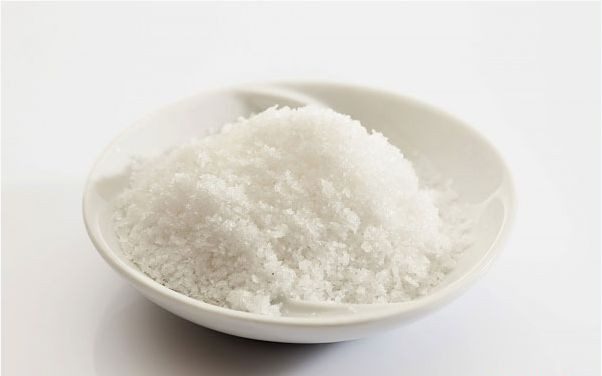Every year, on the 23rd day of the last lunar month, Vietnamese people prepare offerings to honor the Kitchen Gods. The Kitchen Gods, known as Ông Công and Ông Táo, are deities who oversee the cooking and household affairs. This day marks their ascent to heaven to report to the Jade Emperor. Therefore, special and thoughtful offerings are required to “send” them back to the heavens. Let’s explore how to prepare a ceremonial tray for the Kitchen Gods to honor them more grandly.
Guide to Preparing Offerings for the Kitchen Gods
Significance of the Kitchen Gods Day
The Kitchen Gods, also known as Tao Quan or Thổ Công, are the deities responsible for overseeing the activities of each household. They determine the health, fortune, and misfortune of the family. Additionally, according to Vietnamese beliefs, the Kitchen Gods protect against evil spirits and maintain peace for the family.
On this day, the Kitchen Gods ascend to heaven to report to the Jade Emperor about the family’s affairs. The carps serve as their vehicle to heaven, which is why families often buy live carps to offer and then release them into a river, symbolizing “the carp crossing the gate of clouds” or “the carp transforming into a dragon.”
The tradition of honoring the Kitchen Gods reflects the veneration of the “Household Deity,” who manages the kitchen, keeps the fire warm for the family, and prays for a prosperous and bountiful year ahead.
Offerings for the Kitchen Gods
1. “Costumes” of the Kitchen Gods

Before preparing the ceremonial tray for the Kitchen Gods, families must have the necessary offerings, which include: three hats for the Kitchen Gods, two hats with wings for Ông Táo, and one hat without wings for Bà Táo. All three hats are decorated with bright colors and sparkle.
In many regions, a single winged hat is used symbolically, along with a robe and a pair of paper sandals. The colors of the hats and robes change according to the five elements.
Specifically, for the years governed by the elements of metal, wood, water, fire, and earth, the colors are gold, white, green, red, and black respectively. These paper items will be burned after the offerings to the Kitchen Gods, along with the old tablet, after which a new tablet will be established.
The color of the hats, robes, or sandals of the Kitchen Gods changes annually according to the five elements. For the Year of the Cat 2023, which is under the metal element, gold should be chosen.
2. Other Offerings for the Kitchen Gods
The preparation of offerings for the Kitchen Gods varies across different regions.
- In the North, on the 23rd day of the last lunar month, live carps are essential, released in a basin of water, stemming from the legend of “the carp transforming into a dragon” to escort the Kitchen Gods back to heaven.
- In Central Vietnam, it is common to offer a paper horse complete with saddle and reins.
- In the South, the offerings are simpler, typically consisting of paper hats, robes, and sandals.
To prepare a ceremonial tray for the Kitchen Gods, each family should create a well-arranged and visually appealing offering to ensure that the Kitchen Gods report back to the Jade Emperor about their abundant lives. When performing the ceremony, remember to recite the prayers for the Kitchen Gods to send them off.
Preparation Guide for Offerings
Traditionally, the offering tray includes the following familiar dishes:
The salty offering tray for the Kitchen Gods typically consists of:
- 1 plate of rice
- 1 plate of salt
- 1 plate of fruit
- 1 pomelo
- 1 vase of chrysanthemums
- 1 small vase of peach blossoms
- 1 betel nut and areca leaf
- 3 cups of rice wine
- 1 pot of lotus tea
- 1 bowl of mushroom soup
- 1 bowl of bamboo shoot soup
- 1 plate of sticky rice cake
- 1 plate of pork sausage
- 1 plate of mixed stir-fried vegetables
- 1 plate of red sticky rice
- 500 grams of boiled pork shoulder
1. Boiled Pork

This is the most important dish to be offered to the Kitchen Gods. The boiled pork should ideally be from the shoulder or neck. When lighting the incense, the piece of pork must remain whole and not sliced.
2. A Soup Dish
A soup is an essential component of the offering tray for the Kitchen Gods. Common soups family prepare for offerings include bamboo shoot soup, sweet potato soup, or mushroom soup.
3. A Vegetable Stir-fry

A vegetable stir-fry enhances the completeness of the offering tray for the Kitchen Gods. You can cook familiar stir-fry dishes like chayote or Chinese cabbage. However, because this is for offerings, do not use garlic in the stir-fry.
4. A Plate of Salt

Salt symbolizes luck, and a plate of salt is also essential for the Kitchen Gods offering. Prepare a plate of fine salt to place on the tray for the offering.
5. Fruit and Paper Offerings
Fruit and paper offerings are indispensable for the Kitchen Gods. Besides the set of hats and robes for the Kitchen Gods mentioned above, you need to buy additional paper money or gold to burn for the Kitchen Gods to cover their travel fees.
After preparing everything, families should place the offering for the Kitchen Gods in the kitchen. When making the offering, ensure that the fire in the kitchen burns brightly, and the offerings are abundant to symbolize a year of prosperity. Some families place one offering tray in the kitchen and another on the ancestor altar.
Important Notes for the Kitchen Gods Ceremony
Although the Kitchen Gods ceremony is well-known, it is still essential to perform the ritual solemnly and follow all steps carefully. Here are some important notes you should know when honoring the Kitchen Gods.
- The ritual must be conducted before noon on the 23rd day of the last lunar month (December 23rd on the lunar calendar).
- Clean the altar thoroughly, ensuring all offerings are washed, neatly arranged, and the water in the cups is refreshed.
- The offering tray and all ritual items must be placed on the altar in the kitchen (some families also place offerings on the ancestor altar and those in the kitchen).
- When making the offerings, keep the fire in the kitchen burning brightly, and the tray abundant. This ensures that the family will be warm and prosperous.
- Next to the kitchen, place a cup of rice and light three incense sticks.
- After half of the incense has burned, the family should take the offerings (paper money, hats, and sandals) to burn and release the carps into the river.
- During the ceremony, the family should not ask for wealth or prosperity but rather request the Kitchen Gods to report the good things and minimize the bad.
- Everyone should not clean or adjust the offerings or the altar space before the Kitchen Gods ceremony. Families must complete their offerings before conducting any cleaning or adjusting.
- In the South, the ceremony does not involve removing the incense holder or replacing it with a new one, nor releasing carps into the river or burning gold in the offering hats as they do not have an altar.
- The offering tray for the Kitchen Gods should avoid foul-smelling items. Do not offer dog, buffalo, cow, cat, or goat meat. Everything should be tidy, clean, delicious, and respectful.
- Before the ceremony, everyone must bathe, wear clean and formal clothes, and avoid wearing shorts. Women should not wear skirts while praying, and all should show respect towards their elders.
- The 23rd day of the last lunar month is considered the first day of the Lunar New Year. After the offerings, families start cleaning, tidying their homes, altars, and decorating for the upcoming New Year.
The Legend of the Kitchen Gods
Offering the Kitchen Gods in the Kitchen or on the Altar?


















































